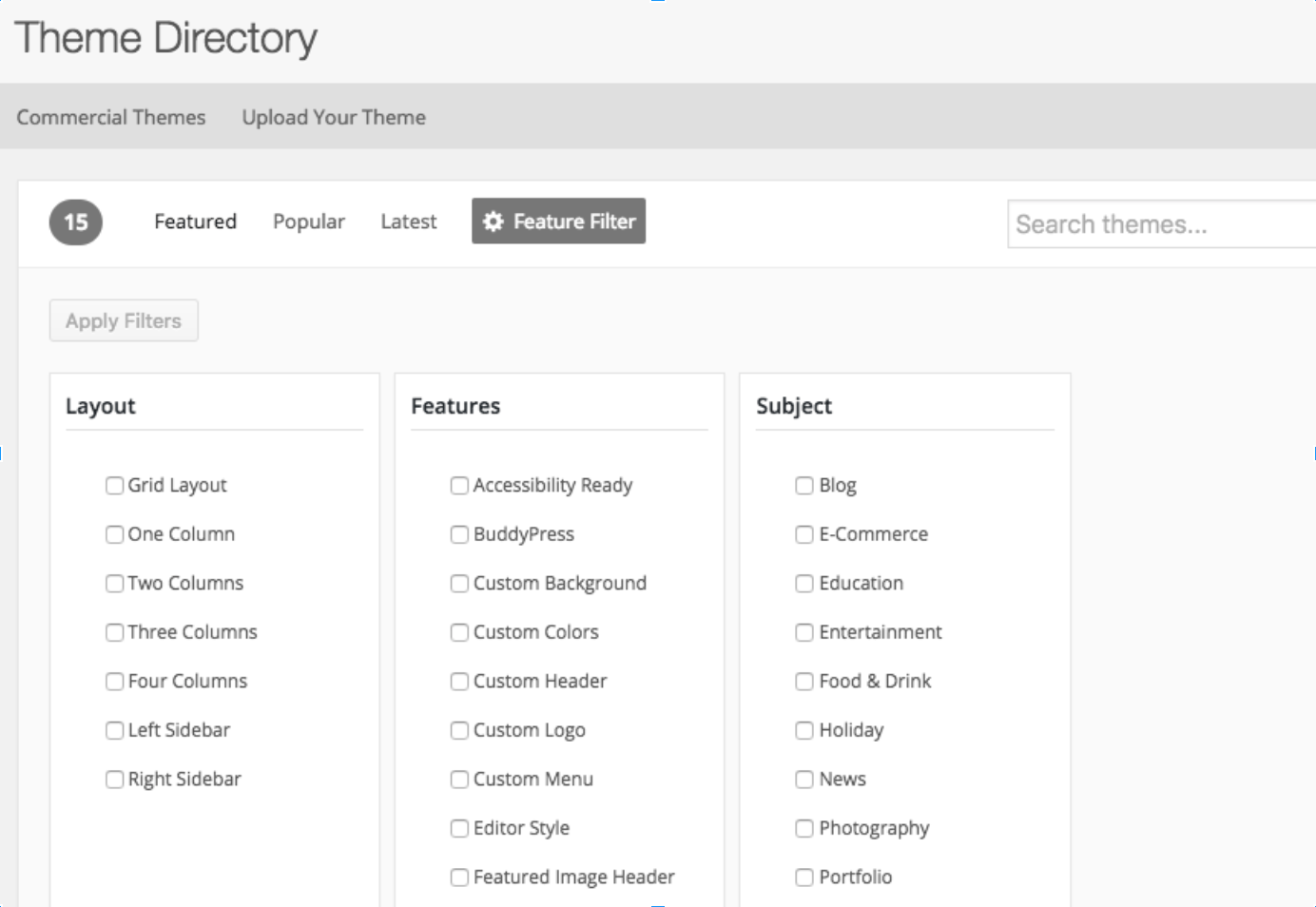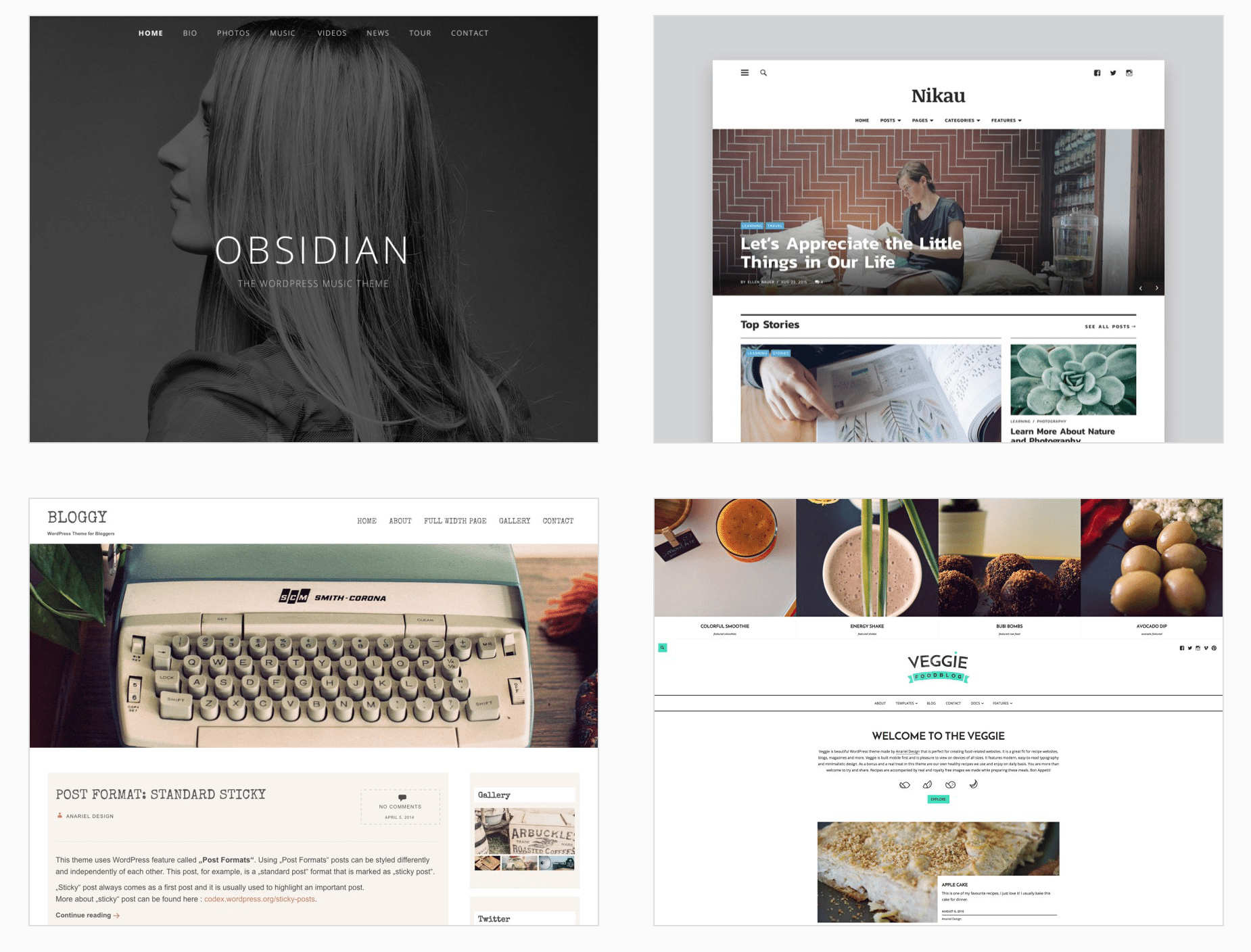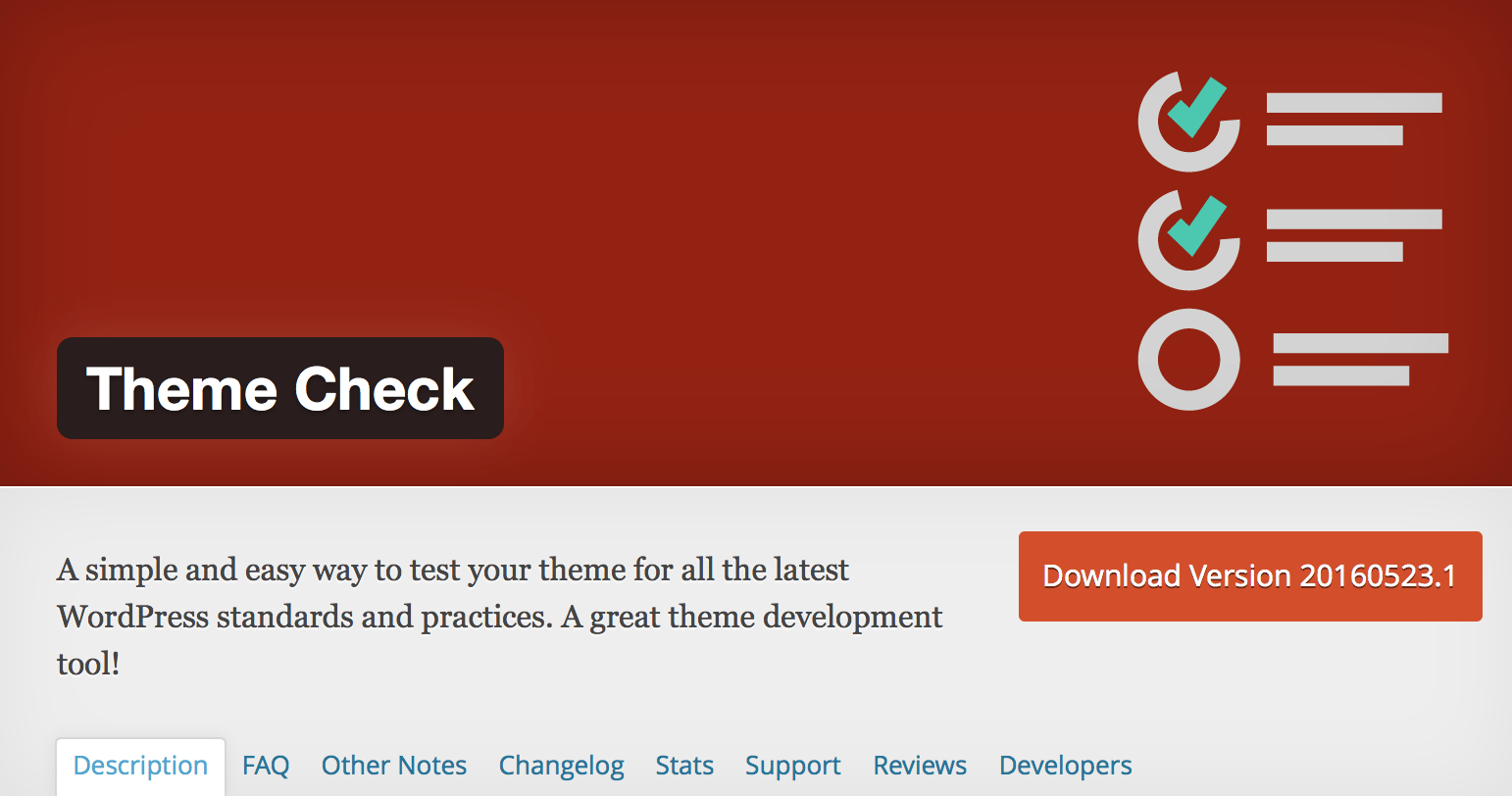There are thousands (10,000-plus) of WordPress themes out there. So many that it would take days on end to search through them all. So how do you narrow it down to find the perfect one for your site?
Choosing the right theme is obviously important – the right one should give your content pizzazz, keeping it responsive across devices, while also loading in the blink of an eye. Yet with so many themes in the pool, it can be a rather daunting task to pick the best one possible.
Before buying a theme, or investing your time in customizing one, be sure to read through this list of do’s and don’ts when it comes to selecting the perfect WordPress theme.
1. Do Make a List of the Features you Want Ahead of Time
Before selecting a theme, it’s absolutely important to determine which features are essential and which you can live without.
The WordPress Feature Filter makes it super easy to customize your search for free themes based on specific features you want, like being translation ready and allowing for a flexible header. It’s important to have the design in mind before making a selection. For instance, you should be prepared to know if you want your site to have one column or multiple columns.

When it comes to WordPress themes, less is always more. Building from the bottom up, the theme you choose should only have the features that will help you accomplish the goal of your site, not unnecessary ones that clutter your theme, which brings us to the next point.
2. Don’t Choose a Bloated Theme
The importance of this is you don’t want a theme cluttered with features – this will only hurt you in the long run. A feature-rich theme might be nice, but it can severely affect site performance. Be sure to restrain yourself against installing every feature you think is cool.
While fancy music players or gaming capabilities might be alluring, they could detract from site performance. Plus, developers often use code they found on the internet for these features, thereby creating security weak spots because they aren’t necessarily focused on keeping a site secure, but performing a specific function.
3. Do Choose a Responsive Theme
Responsive design simply means making your site ultra-easy to use – not just on a laptop, but on multiple devices. This means that it’s compatible with mobile and has menus and other widgets that are easy to navigate. Look for features like a fluid site grid and flexible images that can translate to non-desktop devices. An example of a responsive theme would be one that can easily translate on a mobile device without any hiccups.
Say that you picked a theme that you love, but it’s not as responsive as you’d like. You’re going to have to customize it a little bit. Here are some ways to make your WordPress theme responsive on your own.
4. Do Keep Colour in Mind
Remember, most of online marketing is based on visual appearance, and colors increase brand recognition as well. If you have a logo, try to match your color scheme of that logo. If sticking to neutrals, a hint of color here and there will make it more interesting. WordPress makes it super easy to alter the appearance, including colors, of a theme by going directly into the file or entering in custom CSS.
If trying to decide between dark and light, note that it’s statistically shown that site visitors prefer lighter colored sights. While a dark website design isn’t an absolute no, if you do choose to opt for the dark side know that you are decreasing readability and the opportunity for more conventional design elements.
(If you want some advice on colors for your theme, here’s some from our CTO, Jason Cohen.)
5. Do Consider Buying a Premium Theme
While free themes are great for those on a budget, they can present some issues. Aside from the quality of coding potentially not being up to par, by using a free theme, you take the risk of it not being updated regularly, a lack of support, and the theme author abandoning the theme altogether.

Premium themes are dynamic, typically offering more features than free ones, which can help you stand apart from the crowd. Check out these premium WordPress themes that only require a one-time cost rather than a recurring payment.
6. Don’t Choose a Theme with a Font that is Hard to Read
This ties back to capturing your visitor’s attention quick so they won’t abandon your site. You want to make it as easy as possible for your audience to navigate your site. Make your fonts simple, sophisticated, and readable. The most popular fonts on the internet in 2016 were Open Sans, Josefin Slab, Arvo, Lato, and Vollkorn.
If you’re familiar with CSS, it should be easy to go in and adjust the font, although some free themes might be limited in customization – something to note during your theme selection process. (For a good read on choosing unique and readable fonts, see Stop Using Arial & Helvetica.)
7. Do Test the Theme Thoroughly
A great place to start when testing out a theme’s efficiency is to install the Theme Check plugin that checks if your theme is up to all current WordPress standards.
When you’re done with all the tweaks and have uploaded all of your content, review your site before announcing it to the world. Reread all of your content, check out your site on mobile, and make sure all of your images load properly. You should also consider investing in a hosting solution that provides staging environments, and install a child theme plugin.

Here’s a compilation of a few places to buy quality themes:
Next Steps
Hopefully, this article has given you some ideas to help narrow down your selection process. What’s great about WordPress is if you do decide to change themes down the road, you’ll have the flexibility to do so. If you’re looking for more on selecting the right WordPress theme, check out this library of resources on Torque.
